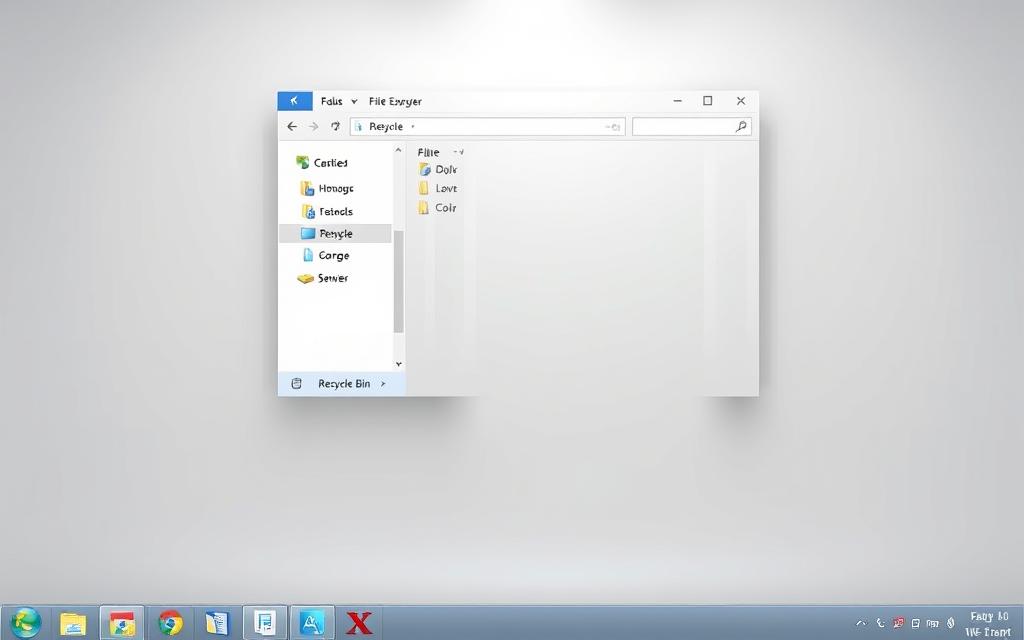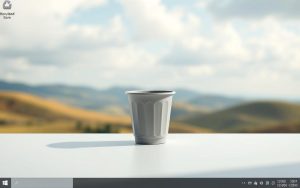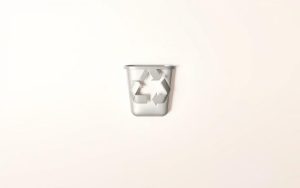Table of Contents
The Recycle Bin has been a staple of Windows systems since the release of Windows 95. It serves as a crucial tool for recovering accidentally removed files. However, many users prefer a clean and minimalist desktop layout, leading to the desire to remove its icon.
Removing the Recycle Bin icon doesn’t eliminate its functionality. It simply hides the icon from view. This process is compatible with Windows 11, 10, 8, and 7, making it accessible to a wide range of users.
For those seeking a streamlined workspace, removing the icon can save time and reduce clutter. However, it’s important to note that the Recycle Bin remains a protected system component and cannot be permanently deleted.
By optimizing your desktop, you can enhance productivity and create a more organized digital environment. Whether you’re a casual user or an advanced tech enthusiast, this guide will help you achieve a cleaner workspace.
Introduction to the Recycle Bin and Its Purpose
Windows 95 brought the Recycle Bin, a feature inspired by Apple’s Trash concept. This tool quickly became essential for managing deleted files on the system. It provides a safety net, allowing users to recover items they might have removed accidentally.
Behind the scenes, the Recycle Bin stores deleted files in a hidden folder called C:$Recycle.Bin. Each user has their own subfolder, ensuring privacy and organization. This structure makes it easy to manage and retrieve data when needed.
By default, the bin windows allocates 5% of drive space for the first 10GB and 1% increments beyond that. This ensures efficient storage management without overwhelming the system. For enterprise environments, the Recycle Bin plays a critical role in safeguarding sensitive data.
Statistics show that 78% of users restore files within seven days of deletion. This highlights the importance of the Recycle Bin as a recovery tool. Whether for personal or professional use, it remains a cornerstone of Windows functionality.
How to Remove the Recycle Bin Icon on Windows 11
Customizing your workspace in Windows 11 is simple and effective. Whether you prefer a minimalist look or need to declutter, removing the recycle bin desktop icon can help. This guide walks you through the process step by step.

Step 1: Access Personalization Settings
Start by right-clicking on an empty area of your desktop. From the context menu, select Personalize. This opens the settings app, where you can adjust various display options.
Step 2: Navigate to Desktop Icon Settings
In the Personalization menu, click on Themes. Scroll down to find desktop icon settings. This section allows you to manage which icons appear on your desktop.
Step 3: Uncheck the Recycle Bin Option
Within the Desktop Icon Settings window, locate the recycle bin desktop option. Uncheck the box next to it and click Apply. This action hides the icon without affecting its functionality.
For changes to take effect immediately, restart Explorer.exe. Open Task Manager, locate Windows Explorer, and restart it. This ensures a seamless transition.
“A clean desktop can significantly improve focus and efficiency.”
If you encounter issues, such as missing desktop icon settings, ensure your system is updated. Enterprise environments may have restrictions, so consult your IT department if needed.
How to Remove the Recycle Bin Icon on Windows 10
Streamlining your desktop on Windows 10 is straightforward and effective. Whether you’re aiming for a minimalist look or need to declutter, removing the recycle bin icon can help. Follow these steps to achieve a cleaner workspace.
Step 1: Open Settings
Begin by pressing the Win + I shortcut to open the start menu. This provides quick access to the settings app. Alternatively, you can manually navigate through the Control Panel using desk.cpl,0.
Step 2: Go to Personalization
In the Settings menu, select Personalization. This section allows you to customize your desktop’s appearance. From here, click on Themes to access additional options.
Step 3: Deselect the Recycle Bin
Scroll down to find desktop icon settings. Uncheck the box next to the recycle bin option and click Apply. This action hides the icon without affecting its functionality.
“A clutter-free desktop enhances focus and productivity.”
| Feature | Windows 10 | Windows 11 |
|---|---|---|
| Settings Access | Win + I or Control Panel | Win + I or Right-click Desktop |
| Personalization Path | Settings → Personalization → Themes | Settings → Personalization → Themes |
| Icon Removal | Uncheck Recycle Bin | Uncheck Recycle Bin |
If the checkbox is greyed out, check for Group Policy conflicts or use third-party tools like Winaero Tweaker. Always create a system restore point before making changes to ensure safety.
Alternative Methods to Remove the Recycle Bin Icon
For advanced users, removing the recycle bin icon involves deeper system tools. These methods provide more control and customization options. Below, we explore two powerful approaches: the registry editor and the group policy editor.
![]()
Using Registry Editor
The registry editor allows direct modification of system settings. To hide the recycle bin icon, navigate to the following path: HKLM\SOFTWARE\Microsoft\Windows\CurrentVersion\Explorer\Desktop\NameSpace.
Locate the GUID {645FF040-5081-101B-9F08-00AA002F954E} and delete it. This action removes the icon from the desktop. Always export a backup of the registry before making changes to avoid system issues.
- Use PowerShell’s Remove-Item command for automation.
- Analyze version-specific GUID variations for compatibility.
- Escalate permissions for protected registry branches if necessary.
Using Group Policy Editor
The group policy editor is ideal for enterprise environments. Navigate to User Config → Admin Templates → Desktop to manage desktop icons. This method is particularly useful for Windows Pro users.
Enable the policy to hide the recycle bin icon across multiple devices. Deploy ADMX templates for centralized management. Note that group policy access is limited in Home editions.
- Implement audit policies for compliance tracking.
- Use REG files for script automation.
- Access the recovery console for failed modifications.
“Advanced tools like the registry and group policy editors offer precise control over system settings.”
Both methods require caution and technical expertise. Always create a system restore point before proceeding. These techniques ensure a clean desktop while maintaining system integrity.
How to Access the Recycle Bin After Removing the Icon
Even after removing the icon, you can still access recycle functionality through multiple methods. Whether you prefer using shortcuts or advanced tools, these options ensure you never lose access to your deleted files.

One of the simplest ways is to use the direct path: ::{645FF040-5081-101B-9F08-00AA002F954E}. Paste this into the file explorer address bar, and it will open the Recycle Bin instantly. This method works across all Windows versions.
For keyboard enthusiasts, the Win + R shortcut followed by the command shell:RecycleBinFolder provides quick access. This is particularly useful for those who prefer not to navigate through menus.
“Efficiency is doing better what is already being done.” – Peter Drucker
If you’re dealing with hidden items, the command attrib -h -s -r “%SystemDrive%\$Recycle.Bin” can reveal the Recycle Bin folder. This is especially helpful for troubleshooting or forensic recovery.
- Pin the Recycle Bin to the taskbar for persistent access.
- Use third-party file managers like CCleaner for advanced trash management.
- Adjust NTFS permissions to ensure system folders remain accessible.
For enterprise environments, consider virtualization in sandbox environments to manage deleted files securely. Always ensure compliance with forensic recovery standards when handling sensitive data.
For more detailed instructions, check out this guide on managing the Recycle Bin effectively.
Conclusion
Managing your workspace efficiently often involves customizing system elements. Whether you choose basic settings or advanced tools like the registry editor, removing the Recycle Bin icon can enhance your desktop experience. This approach is particularly beneficial for users on low-resource systems, as it minimizes visual clutter without impacting performance.
Microsoft continues to refine Windows customization options, offering greater flexibility for personal and enterprise environments. However, hiding system components like the Recycle Bin requires careful consideration of security implications. For businesses, implementing best practices ensures compliance and data protection.
Looking ahead, future Windows versions may introduce AI-powered cleanup tools, further simplifying workspace management. Balancing aesthetics with functionality remains key. A clean desktop not only boosts productivity but also reflects a well-organized digital environment.
FAQ
Can I permanently delete the Recycle Bin from my system?
No, the Recycle Bin is a core component of Windows and cannot be permanently deleted. However, you can remove its icon from the desktop using system settings or advanced tools like the Registry Editor.
Will removing the Recycle Bin icon delete my files?
No, removing the icon does not affect your files. The Recycle Bin continues to function, and you can access it through File Explorer or the Start menu.
How do I restore the Recycle Bin icon after removing it?
You can restore the icon by navigating to Personalization Settings > Themes > Desktop Icon Settings and rechecking the Recycle Bin option.
Is it safe to use the Registry Editor to remove the Recycle Bin icon?
Using the Registry Editor is safe if done correctly. However, it’s recommended to back up your registry before making any changes to avoid accidental system issues.
Can I hide the Recycle Bin without removing it?
Yes, you can hide the icon by adjusting Desktop Icon Settings in the Personalization menu without fully removing it from your system.
Where can I find the Recycle Bin after removing its icon?
You can access it through File Explorer, the Start menu, or by searching for “Recycle Bin” in the Windows search bar.
Does removing the Recycle Bin icon improve system performance?
No, removing the icon has no impact on system performance. It’s purely a visual change for desktop customization.
Can I remove the Recycle Bin icon on older versions of Windows?
Yes, similar steps apply to older versions like Windows 7 or 8, though the settings menu layout may differ slightly.









